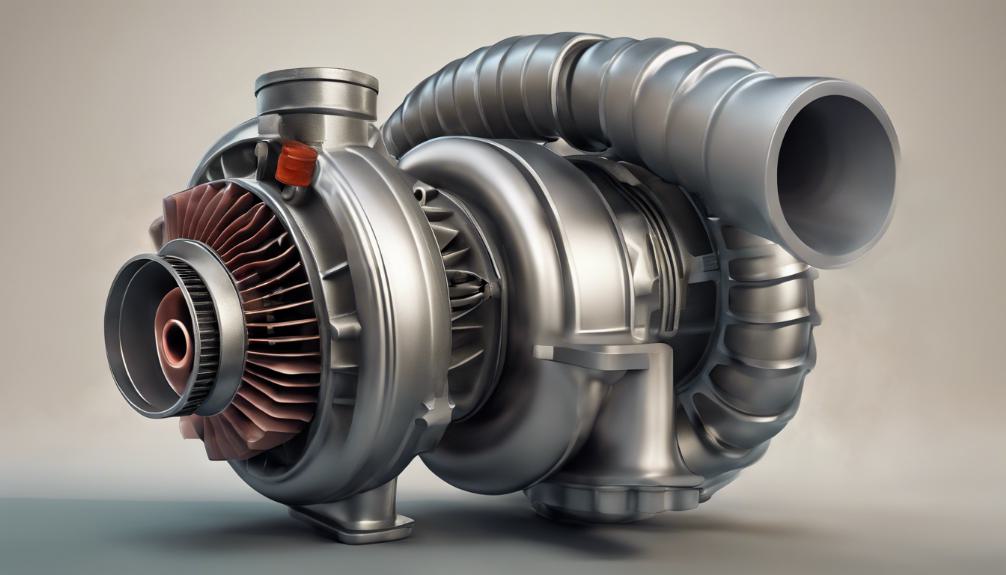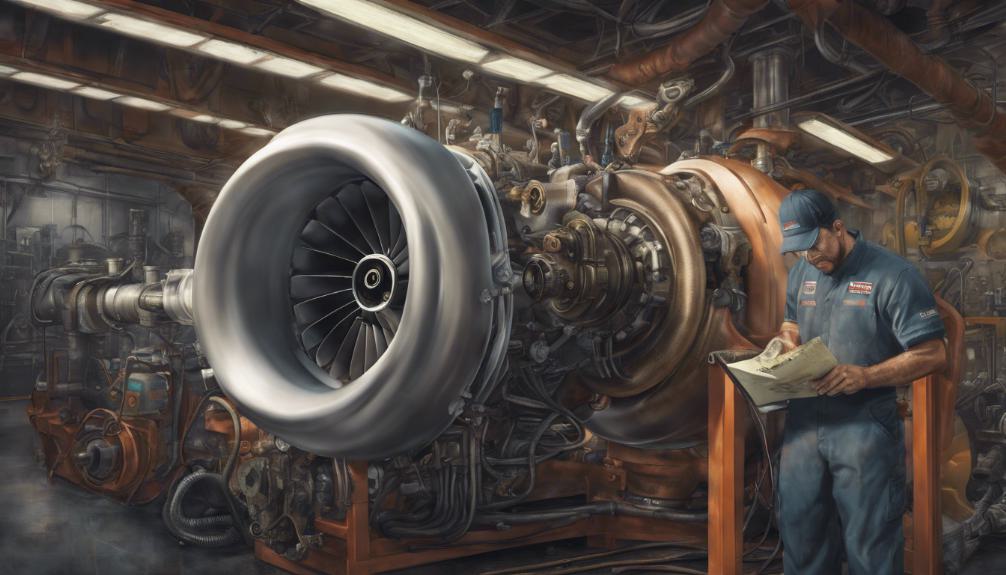If you’ve sensed a delay in power when stepping on the gas, turbo lag might be the culprit in your turbocharged vehicle. Causes stem from slow exhaust pressure buildup and turbo size misfits. Impact?
Delayed acceleration and fuel inefficiency. To reduce lag, maintain turbos well, fix leaks promptly, and tweak compression ratios. Adjusting A/R ratios and utilizing wastegates also help.
Driving-wise, stick to peak power ranges, downshift smartly, and modulate throttle for efficient spooling. Avoid heavy loads. These tips can smoothen out your driving experience and boost turbo performance subtly.
What You Need to Know
- Delay in exhaust pressure build-up causes turbo lag.
- Turbo size and RPM range affect spooling speed.
- Sequential turbocharging technology can reduce lag.
- Regular maintenance and prompt leak fixes are crucial.
- Proper tuning, like adjusting compression ratio, minimizes lag.
Common Causes of Turbo Lag

One common cause of turbo lag is the delay in building exhaust pressure to spin the turbocharger.
This delay occurs because the engine needs time to generate enough exhaust pressure to drive the turbocharger effectively.
The size of the turbo and how well it matches the engine’s RPM range are important factors in minimizing turbo lag.
If the turbo is too small for the engine, it may struggle to spool up quickly, resulting in noticeable lag.
Understanding the causes of turbo lag, such as wastegate operation and engine RPM, is vital for reducing turbo lag effectively.
To reduce turbo lag, it’s important to make sure that the turbo size is appropriate for the engine’s power output and RPM range. Whats more, optimizing wastegate operation can help control excess exhaust pressure, improving turbo response.
By addressing these factors, you can enhance your vehicle’s performance by minimizing turbo lag and ensuring smoother acceleration.
Impact of Turbo Lag on Performance
When turbo lag impacts performance, it can lead to delayed acceleration and affect the overall driving experience.
This delay is often noticeable when you press the accelerator, but the power delivery from the turbocharged engine doesn’t match your expectations.
The inconsistent power delivery can make handling unpredictable, especially when you need quick responses.
Turbo lag can also have a negative impact on fuel efficiency since the engine may struggle to generate power efficiently, leading to excess exhaust pressure.
At high engine speeds, the compression ratios may not be ideal, causing spooling times to increase.
To reduce turbo lag, ensuring the turbocharger is sized to boost right for your engine is essential.
Technologies like sequential turbocharging or adding nitrous can also help address turbo lag, especially in low-rpm situations where the air-fuel mixture may not be ideal.
Addressing turbo lag is vital for maintaining your vehicle’s performance and optimizing your driving experience.
Maintenance Tips for Reducing Turbo Lag

To reduce turbo lag effectively, prioritize regular maintenance of your turbo components such as wastegates and exhaust systems.
Addressing issues like exhaust leaks and boost leaks promptly can prevent increases in turbo lag.
Ensuring that your engine’s compression ratio is properly adjusted can also aid in reducing turbo lag.
Then, utilizing techniques such as adding nitrous oxide and optimizing pressure control mechanisms can help minimize turbo lag.
For further enhancement, consider employing sequential turbocharging and combining small and large turbochargers to improve overall engine performance and reduce lag.
Proper maintenance of wastegates and exhaust systems is essential to keep your turbo system running smoothly and efficiently.
By staying proactive in identifying and resolving issues like leaks and ensuring proper pressure control, you can significantly reduce turbo lag and enjoy a more responsive driving experience.
Remember, regular maintenance is key to keeping your turbo system in top condition and minimizing lag.
Engine Tuning Strategies for Turbo Lag Reduction
To enhance your vehicle’s performance and minimize turbo lag, consider implementing engine tuning strategies such as adjusting the compression ratio and utilizing variable geometry turbos.
The compression ratio affects the engine’s efficiency and responsiveness, impacting turbo lag. Variable geometry turbos allow for adjusting the turbine’s geometry to optimize performance at different engine speeds, helping reduce lag.
Ensuring proper A/R ratios in turbos is vital for improving overall performance and minimizing lag.
Also, incorporating wastegates, smaller exhaust housings, and effective pressure control mechanisms can further contribute to reducing turbo lag.
Advanced techniques like sequential turbocharging and using a combination of small and large turbochargers can enhance engine efficiency by delivering power more efficiently and decreasing lag.
Understanding the role of turbocharger components and tuning in reducing turbo lag is essential for achieving top-notch engine performance and efficiency.
Driving Techniques to Minimize Turbo Lag

Implementing correct driving techniques is essential for minimizing turbo lag and optimizing your vehicle’s performance.
To reduce turbo lag, focus on keeping the engine in its peak power range by utilizing manual transmission effectively.
Downshifting and maintaining higher RPM levels can help achieve this, improving acceleration response and minimizing lag.
When accelerating, apply gradual throttle input instead of sudden bursts to allow the turbo to spool up more efficiently.
Then, consider using engine braking techniques to keep the turbocharger spinning, reducing the time needed to build up boost pressure and minimizing lag.
Avoid heavy loads and uphill driving situations as they can strain the turbocharger, leading to increased lag during acceleration.
By following these driving techniques and staying within the peak power range, you can effectively reduce turbo lag, enhance your vehicle’s performance, and enjoy a smoother driving experience.
As an Amazon Associate we earn from qualifying purchases.










